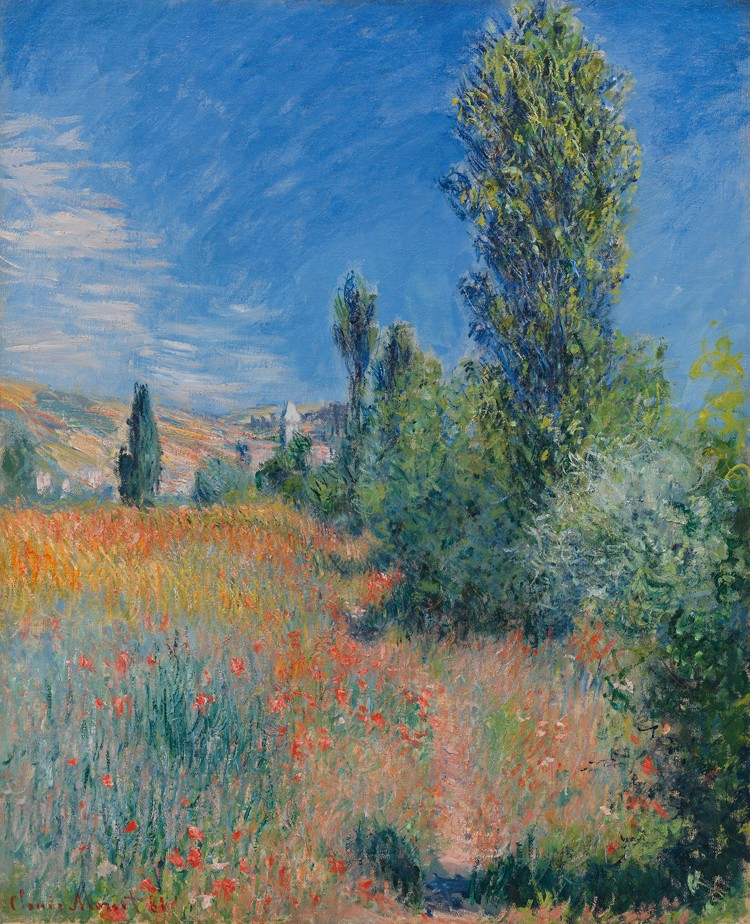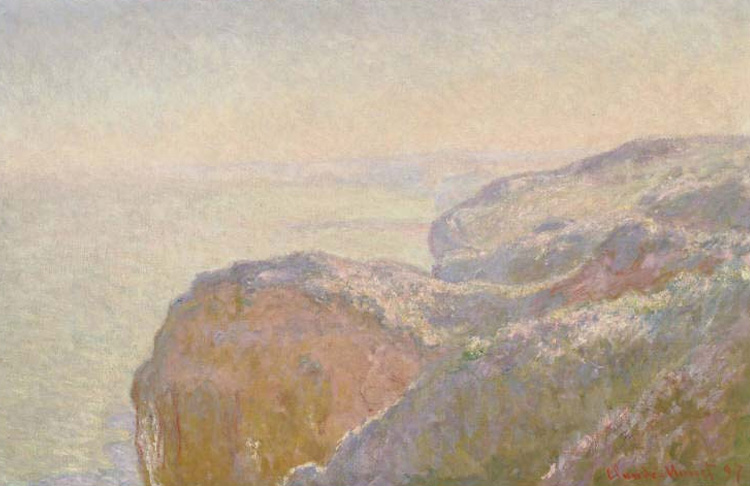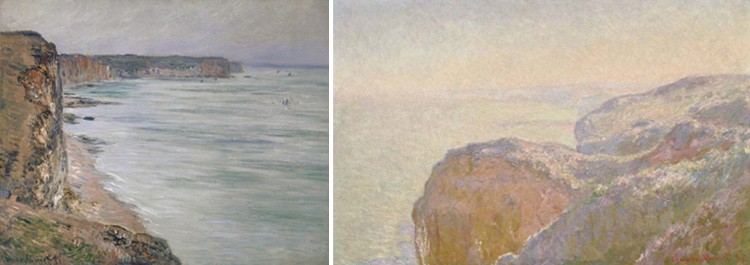
Claude Monet, En Paysage dans I’île Saint-Martin, 1881. Oil on canvas, 28 13/16 x 23 5/8 in. Paul G. Allen Family Collection
Bright and warm, Claude Monet’s En Paysage dans I’île Saint-Martin (on view in Seeing Nature: Landscape Masterworks from the Paul G. Allen Collection) depicts a nearly perfect day. Monet painted this scene in Vétheuil, a small village forty miles west of Paris, where he lived with his wife and two children, as well as the family of his patron, Ernest Hoschedé. In settling in Vétheuil, Monet hoped to find not only creative inspiration, but also imagery that could be translated into salable pictures that would replenish his dwindling financial resources. Filling the canvas with loosely applied dashes of brightly hued paint, Monet captured light and atmosphere—a goal shared by his fellow French Impressionists. One of the original members of that group of avant-garde painters, Monet painted what he sensed, not just what he saw.


